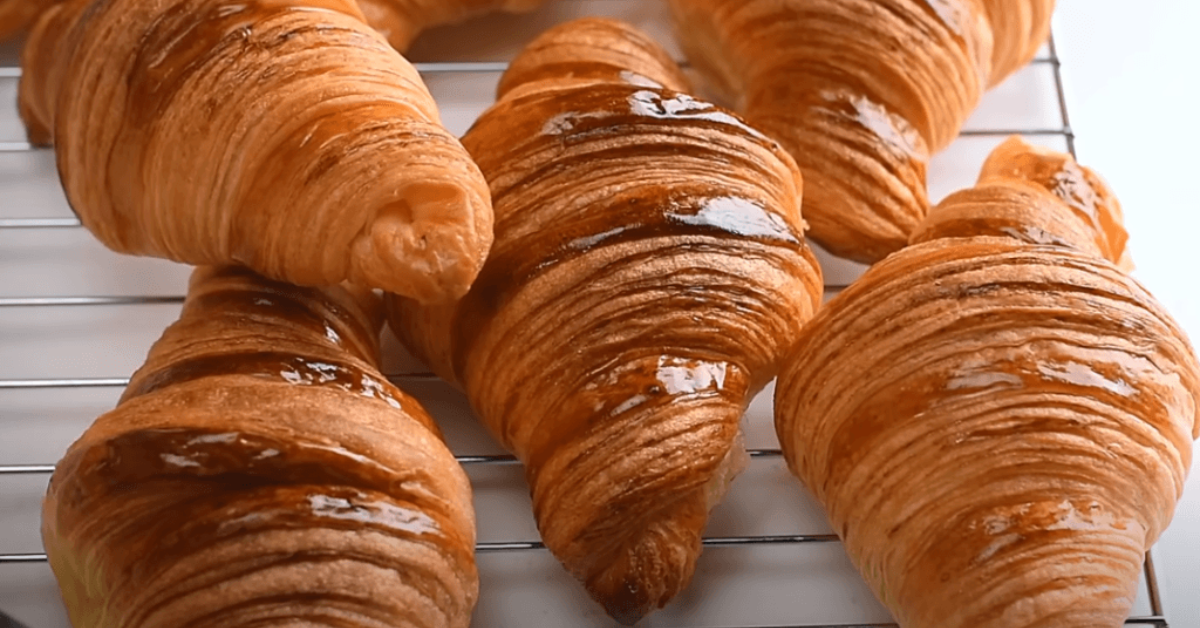The croissant is a globally loved pastry, cherished for its delicate, buttery layers and crescent shape. A classic example of French culinary art, croissants are a staple in bakeries worldwide. To truly appreciate their flaky perfection, it’s essential to understand the role of each ingredient in creating this iconic pastry.
Laminated dough is the backbone of a croissant, requiring skill, patience, and high-quality ingredients. If you’re new to baking croissants, this step-by-step croissant guide will walk you through the entire process. Additionally, for insights into other laminated pastries, explore the art of baking Gipfeli, a Swiss cousin to the croissant.
The Core Ingredients for a Perfect Croissant
1. Flour for Croissants: The Foundation
Flour is the base ingredient for croissant dough and plays a critical role in forming its structure.
- Best choice: Bread flour or all-purpose flour with moderate protein content.
- Why it matters: Gluten development ensures the dough can stretch and hold its buttery layers during lamination.
For more insight into flour types, visit King Arthur Baking’s flour guide.
2. Butter for Croissants: Creating Flaky Layers
Butter is undoubtedly the star ingredient in croissants, playing a central role in achieving their signature rich flavor and delicate flakiness. The type of butter you choose can significantly impact the final result.
European-Style Butter
With a high-fat content of at least 82%, European-style butter is ideal for croissants. Its lower water content ensures the dough remains pliable and creates the tender, melt-in-your-mouth texture croissants are known for.
Why Butter Is Essential in Croissants
Butter is crucial during the lamination process. It forms thin layers between the dough, and as the croissants bake, the butter melts and releases steam. This steam causes the layers to separate and puff up, resulting in the light, crispy, and golden-brown finish we associate with perfectly baked croissants.
In short, butter is not just an ingredient; it’s the backbone of the pastry, delivering both texture and flavor that no alternative can replicate.
For tips on choosing butter for baking, explore Baking Sense’s guide to butter in pastries.
3. Yeast in Croissants: The Leavening Agent
Yeast is the ingredient that helps croissants rise and develop their airy texture.
- Active dry yeast or instant yeast: Both are suitable, with instant yeast being more convenient.
- Role: Yeast ferments the sugars in the dough, creating gas bubbles that expand during baking.
4. Milk in Croissant Dough: Adding Softness
Milk contributes richness and enhances the croissant’s tender crumb.
- Whole milk: The fat content ensures a soft yet elastic dough.
- Cold milk: Helps maintain a cool dough, crucial for successful lamination.
5. Sugar in Croissants: Sweetening and Browning
Sugar adds a subtle sweetness to croissants and aids in browning during baking.
- Amount: Typically used sparingly to complement the buttery flavor without overpowering it.
6. Salt in Croissant Dough: Enhancing Flavor
Salt balances the sweetness and brings out the butter’s richness.
- Why it’s important: Salt also strengthens gluten structure, ensuring the dough can hold its layers.
For more on salt’s role in baking, check out Salted Plains’ guide to salt in recipes.
The Role of Laminated Dough in Croissants
How Laminated Dough Creates Flaky Croissants
Laminated dough is the heart of a croissant, involving repeated folding of butter into dough.
- Why it matters: The process creates alternating layers that separate during baking, producing the croissant’s flakiness.
- Pro tip: Work in a cool environment to keep the butter from melting.
For a detailed explanation, visit King Arthur Baking’s laminated dough guide.
Croissant Variations and Fillings
Popular Croissant Fillings: Chocolate, Almond, and Savory Options
- Chocolate Croissants (Pain au Chocolat): Add a bar of chocolate before rolling the dough.
- Almond Croissants: Spread almond paste inside the dough and garnish with sliced almonds.
- Savory Variations: Fill croissants with cheese, ham, or spinach for a savory twist.
Frequently Asked Questions (FAQs) of Croissant
What are the ingredients in croissant dough?
The essential ingredients are flour, butter, yeast, milk, sugar, and salt.
Can margarine replace butter in croissants?
While margarine can be used, butter provides a richer flavor and better textur.
How many layers are in a croissant?
Traditional croissants have 81 layers, achieved through three folds during lamination.
What is the difference between puff pastry and croissant dough?
Puff pastry doesn’t contain yeast, making it less airy than croissant dough.
Conclusion
The perfection of a croissant lies in its precise balance of ingredients and techniques. By combining flour, butter, yeast, milk, sugar, and salt with the art of lamination, you can create a pastry that’s as beautiful as it is delicious. For more inspiration, explore The Ultimate Guide to Baking Gipfeli, which highlights another style of laminated dough pastry.
Ready to bake your own croissants? With patience, practice, and quality ingredients, you’ll soon master this culinary classic. Happy baking!

